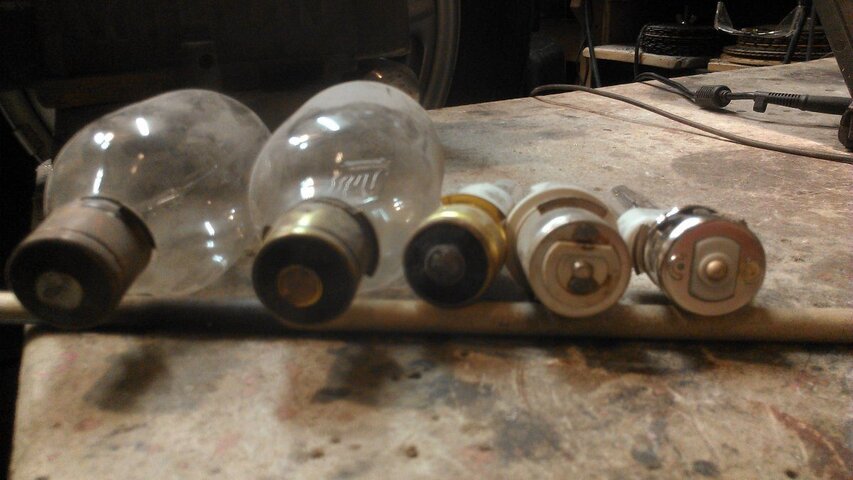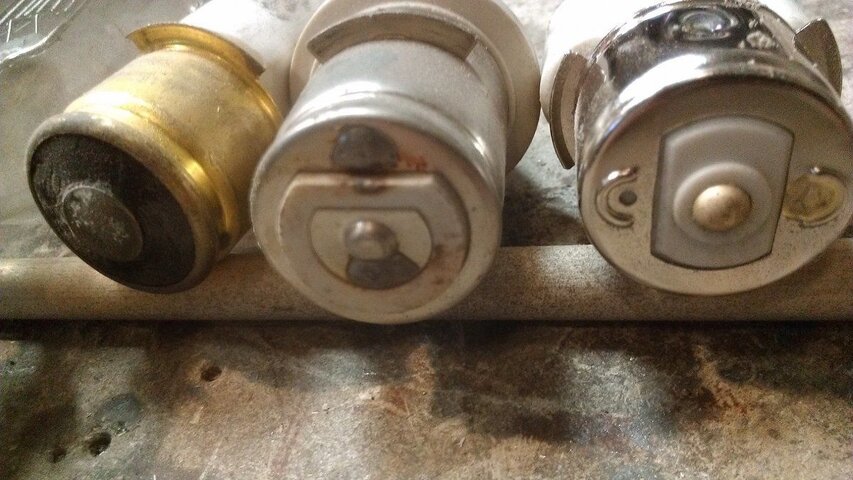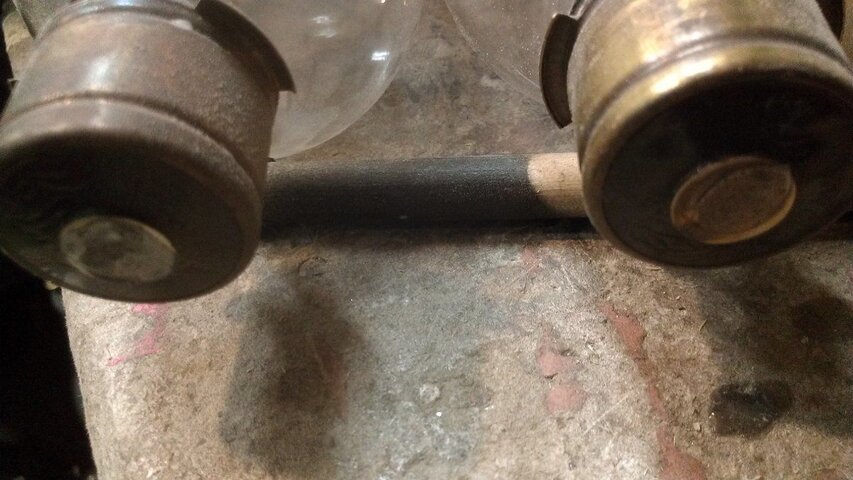Ken Johnson
Member
Ladies and Gentlemen,
As you may tell, I am new to this forum. In my searches of the last two weeks, I believe that you may be the only ones able to help me.
First of all, I am a retired telecommunications engineer. In college, I minored in technical theater and was trained in lighting, lighting design, set design and construction. Much of my early career was spent in
television engineering with much of that in maintenance and maintenance supervision. Working with studio lighting and repairing instruments was all part of the job.
This leads me to today. I have volunteered in the theater of the local community college for the last several years. About three years ago, they underwent a major renovation. As part of the contract, new instruments were provided. One particular instrument is giving them problems. It is an Altman 1KAF-MPF 6” fresnel. The instrument itself appears to be fine, it is the P28S socket for the 1KW BTR lamp that is giving them no end of trouble.
This is what brings me to you. Yours is the only site I have found that addresses the burning and arcing problems they are experiencing.
Last week, as we were hanging instruments for a show, two more failed. The lamps exhibited bad burns and signs of extensive arcing around the center terminal. The socket center contact was very badly burned, pitted and discolored to the point that it looks rusty. The rest of the interior was heavily blued from heat and the 250 degrees C rated insulation to the center terminal was melted and pealed back a good inch or more.
Many of you have seen this and it is nothing new. I know that at least one of your members has had good luck cleaning and resurfacing the P28S sockets, but that is not why I am writing.
I am going to go outside of the box with an observation of the socket and the base of the BTR. Please be patient with me.
A new P28S has a conical depression machined into the center of the center contact. It's purpose appears to center the small ball (I have heard people call it a 'BB') in the center terminal of the BTR base and provide a sound contact between the two. With a brand new socket and a brand new lamp, the 'BB' will seat in the cone and make a contact all the way around the 'BB' where it completely touches the cone.
This sounds like a good idea, but I am beginning to wonder how well it holds up in service.
A 1KW lamp will draw about 8.3 amps in a 120v system. This arrangement pushes all this current through the ring shaped contact point between the socket and the lamp. The elements of this ring are hard metal. I am guessing that the socket is nickel and the lamp contact is brass. This ring shaped contact patch is very narrow.
My concern is that this appears to be a very fragile arrangement. Any corrosion at this junction will reduce the contact area and rapidly increase the heat generated at the junction as current is forced to flow through a smaller contact area. If the two surfaces are not perfectly round and perfectly mated, you will have a reduced contact area and more heat again.
Alright, here is where I climb out of the box. Many years ago, I remember the 1KW lamps we used in the scoops in the TV studio. These lamps had substantial contacts in their bases and we had few problems with them. I just looked at a 60W lamp in a light in my house and it has a much larger contact area than a BTR.
I am thinking of a way to greatly increase the contact area between the BTR base and the P28S socket. Looking at the base of the lamp, it actually looks like it is designed with my idea in mind. The 'BB' sits in the middle of a flat ceramic plateau about 9mm in diameter. I just got back from the hardware store with a package of brass #8 flat washers. This washer fits snugly around the 'BB' terminal and still rests flat on top of the ceramic plateau. I am thinking of carefully soldering the washer to the 'BB'. Not a lot of solder and none in the contact area of the socket center terminal. A dry fit with the P28S shows that it sits there perfectly and gives a much larger contact area.
Alright, that is the thought. The college is really short of funds and I have already purchased two new sockets and the necessary hardware and tools to install them. (Thank you to one of your members for the materials list.) So this is coming out of my pocket. Members of this forum are going to forget more about stage lighting that I will ever know, but sometimes out of the box thinking can solve a problem. I would like to hear from you, I need your thoughts. You may think of something I completely missed. If I do not hear anything, I will try one instrument and one lamp and put it into service. If it fails, no problem, I payed for it. If it works, we may all benefit. Either way, I will report back here.
Respectfully,
Ken
As you may tell, I am new to this forum. In my searches of the last two weeks, I believe that you may be the only ones able to help me.
First of all, I am a retired telecommunications engineer. In college, I minored in technical theater and was trained in lighting, lighting design, set design and construction. Much of my early career was spent in
television engineering with much of that in maintenance and maintenance supervision. Working with studio lighting and repairing instruments was all part of the job.
This leads me to today. I have volunteered in the theater of the local community college for the last several years. About three years ago, they underwent a major renovation. As part of the contract, new instruments were provided. One particular instrument is giving them problems. It is an Altman 1KAF-MPF 6” fresnel. The instrument itself appears to be fine, it is the P28S socket for the 1KW BTR lamp that is giving them no end of trouble.
This is what brings me to you. Yours is the only site I have found that addresses the burning and arcing problems they are experiencing.
Last week, as we were hanging instruments for a show, two more failed. The lamps exhibited bad burns and signs of extensive arcing around the center terminal. The socket center contact was very badly burned, pitted and discolored to the point that it looks rusty. The rest of the interior was heavily blued from heat and the 250 degrees C rated insulation to the center terminal was melted and pealed back a good inch or more.
Many of you have seen this and it is nothing new. I know that at least one of your members has had good luck cleaning and resurfacing the P28S sockets, but that is not why I am writing.
I am going to go outside of the box with an observation of the socket and the base of the BTR. Please be patient with me.
A new P28S has a conical depression machined into the center of the center contact. It's purpose appears to center the small ball (I have heard people call it a 'BB') in the center terminal of the BTR base and provide a sound contact between the two. With a brand new socket and a brand new lamp, the 'BB' will seat in the cone and make a contact all the way around the 'BB' where it completely touches the cone.
This sounds like a good idea, but I am beginning to wonder how well it holds up in service.
A 1KW lamp will draw about 8.3 amps in a 120v system. This arrangement pushes all this current through the ring shaped contact point between the socket and the lamp. The elements of this ring are hard metal. I am guessing that the socket is nickel and the lamp contact is brass. This ring shaped contact patch is very narrow.
My concern is that this appears to be a very fragile arrangement. Any corrosion at this junction will reduce the contact area and rapidly increase the heat generated at the junction as current is forced to flow through a smaller contact area. If the two surfaces are not perfectly round and perfectly mated, you will have a reduced contact area and more heat again.
Alright, here is where I climb out of the box. Many years ago, I remember the 1KW lamps we used in the scoops in the TV studio. These lamps had substantial contacts in their bases and we had few problems with them. I just looked at a 60W lamp in a light in my house and it has a much larger contact area than a BTR.
I am thinking of a way to greatly increase the contact area between the BTR base and the P28S socket. Looking at the base of the lamp, it actually looks like it is designed with my idea in mind. The 'BB' sits in the middle of a flat ceramic plateau about 9mm in diameter. I just got back from the hardware store with a package of brass #8 flat washers. This washer fits snugly around the 'BB' terminal and still rests flat on top of the ceramic plateau. I am thinking of carefully soldering the washer to the 'BB'. Not a lot of solder and none in the contact area of the socket center terminal. A dry fit with the P28S shows that it sits there perfectly and gives a much larger contact area.
Alright, that is the thought. The college is really short of funds and I have already purchased two new sockets and the necessary hardware and tools to install them. (Thank you to one of your members for the materials list.) So this is coming out of my pocket. Members of this forum are going to forget more about stage lighting that I will ever know, but sometimes out of the box thinking can solve a problem. I would like to hear from you, I need your thoughts. You may think of something I completely missed. If I do not hear anything, I will try one instrument and one lamp and put it into service. If it fails, no problem, I payed for it. If it works, we may all benefit. Either way, I will report back here.
Respectfully,
Ken





